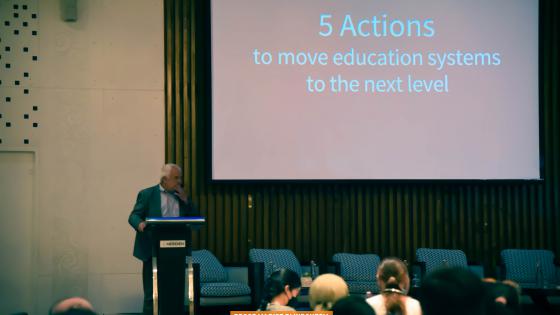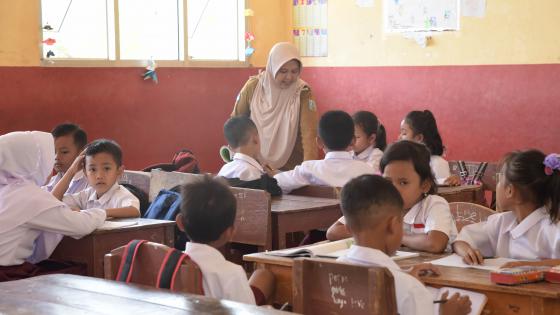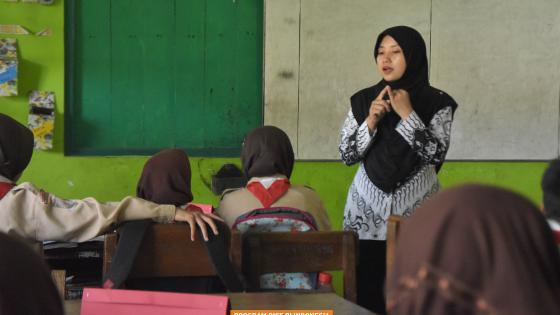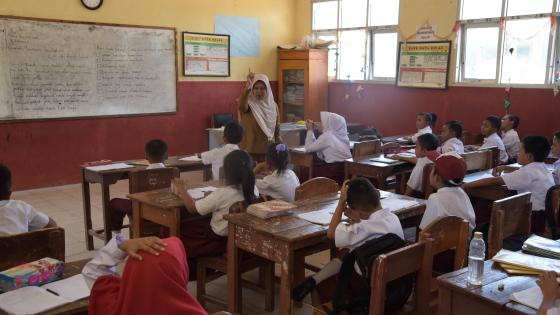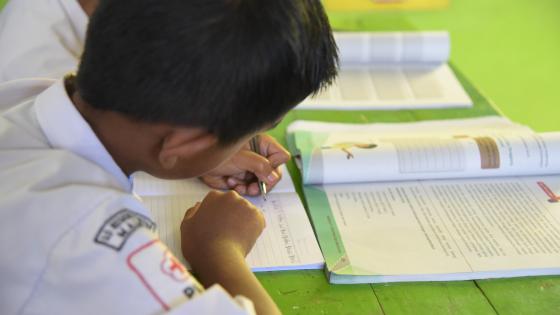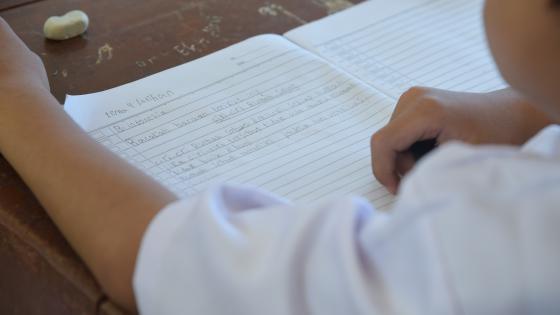Photo illustration: Novita Eka Syaputri
.
This article was originally posted on The Conversation Indonesia and has been translated by RISE team. It was written to commemorate International Literacy Day celebrated every 8 September.
.
The literacy level of the Indonesian people is still very poor.
The results of the 2018 Programme for International Students Assessment (PISA), for instance, showed that 70% of students in Indonesia have low reading ability (below Level 2 on the PISA scale). This means that students cannot even find the main idea or important information in a short text.
This is aggravated by the low reading interest in Indonesia. In 2018, a survey by Statistics Indonesia (BPS) showed that the percentage of the population over the age of 10 who read newspapers or magazines was only 14.92%.
This figure was lower than the percentage in the previous fifteen years (23.70%).
In fact, for almost fifteen years, the government had issued various national policies to overcome this literacy crisis.

However, instead of improving, the average reading score of Indonesian students at PISA 2018 was exactly the same as the results in 2000 when Indonesia first participated in PISA.
This failure is correlated with the fact that Indonesian students have limited access to reading materials—since few libraries and quality reading books are available.
Why national programmes fail to address literacy crisis
The government’s programmes to date, from the nine-year compulsory education policy under President Susilo Bambang Yudhoyono to the National Literacy Movement (Gerakan Literasi Nasional) campaign initiated by the Ministry of Education and Culture (MoEC) since 2016, have been hampered by the limited access to libraries and quality reading books.
The latest report from the National Library states that currently, there are only 154,000 libraries in Indonesia or only meet 20% of the national needs.
The shortage of libraries includes public libraries (only 26% of the 91,000 needs) and school libraries (only 42% of the 287,000 needs).
The lack of access to the library is also felt at the sub-district level.
Of the total needs of 7,094 libraries at the sub-district level throughout Indonesia, only about 6% or 600 libraries are located centrally on the island of Java. This affects the low public access to libraries and books in areas outside Java.
The score was based on the Ministry of Education and Culture’s “Reading Literacy Activity Index” in 2019. Regarding access to libraries and reading books in areas outside Java, such as East Nusa Tenggara, West Kalimantan, Aceh, and Papua provinces, the score was still below 20, far below Yogyakarta (47.11) and Jakarta (46.46).
The limited number of libraries is also intensified by the small number of quality reading books. There is no data to show the situations at the national level. Still, a survey by Innovation for Indonesia’s School Children (INOVASI)—a partnership programme between the Governments of Australia and Indonesia—provides some overview of conditions in the regions.
In North Kalimantan, although 80% of children claimed that they like to read, their reading materials were dominated by textbooks (67%). Only a few read storybooks (13%) or general knowledge books (2%).
Innovative policy: learning from Yogyakarta
A qualitative study by RISE Programme found that the people of Yogyakarta have a high reading interest. This achievement was encouraged by literacy activities held regularly in the community units (RW) and villages in Yogyakarta Province, which people of all ages enthusiastically attend. This high reading interest is also supported by community collaboration with the local government.
The Office of Regional Library (Perpusda) of Yogyakarta City has put together literacy programmes that actively reach the community, such as the tricycle motorbike library service (PUSPITA) and mobile library car (MONIKA).
These two fleets are assigned to reach villages, public open spaces, and schools without adequate reading materials. The regional librarians also greet the community and open their services on car-free days.
A bookmobile or mobile library (MONIKA) provided by the Regional Library Office (Perpusda) of Yogyakarta City. (Photo: Risa W. Nihayah)
These findings can at least explain why Yogyakarta achieved a higher PISA literacy score than the national average. This result is equivalent to the reading ability of students in Malaysia and Brunei Darussalam.
Learning from Yogyakarta, local stakeholders should be more proactive in fostering public interest in reading. Collaboration between local stakeholders is the key to overcoming the reading literacy crisis in Indonesia. The mobile library programme in Yogyakarta, for example, can be adopted using different modes of transportation according to local conditions.
For example, some time ago, the mass media covered a literacy activist using a library horse on the slopes of Mount Slamet in Central Java and a library boat reaching villages along rivers or coasts in Kalimantan and Sulawesi.
Creative steps adapted to local contexts such as these are worth trying to address the literacy crisis in Indonesia. Local governments should also allocate Village Funds to build libraries in their areas following the Village Minister Regulation Number 22 of 2016.

